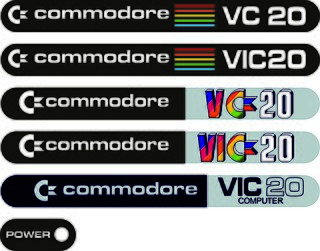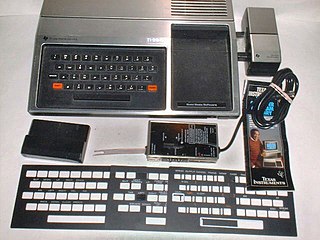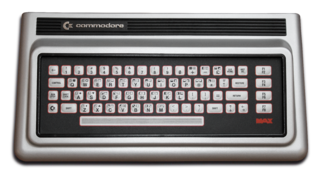This article relies largely or entirely on a single source .(September 2012) |
The Expert Cartridge from the UK company Trilogic was a popular extension cartridge which was introduced in mid-1986 for the Commodore 64 and a later Commodore 128 compatible version, It offered a fast loader, increasing the speeds of the disk drive, and a freezer, allowing the program execution to be stopped to be resumed later. Later Cat & Korsh International took over the distribution and the Trilogic name disappeared from the cartridge.

A ROM cartridge, usually referred to simply as a cartridge or cart, is a removable memory card containing ROM designed to be connected to a consumer electronics device such as a home computer, video game console or, to a lesser extent, electronic musical instruments. ROM cartridges can be used to load software such as video games or other application programs.

The Commodore 64, also known as the C64 or the CBM 64, is an 8-bit home computer introduced in January 1982 by Commodore International. It has been listed in the Guinness World Records as the highest-selling single computer model of all time, with independent estimates placing the number sold between 10 and 17 million units. Volume production started in early 1982, marketing in August for US$595. Preceded by the Commodore VIC-20 and Commodore PET, the C64 took its name from its 64 kilobytes(65,536 bytes) of RAM. With support for multicolor sprites and a custom chip for waveform generation, the C64 could create superior visuals and audio compared to systems without such custom hardware.
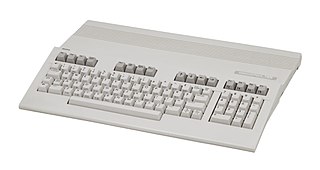
The Commodore 128, also known as the C128, C-128, C= 128, is the last 8-bit home computer that was commercially released by Commodore Business Machines (CBM). Introduced in January 1985 at the CES in Las Vegas, it appeared three years after its predecessor, the bestselling Commodore 64.
Contents
A major difference to the other two The Final Cartridge III and Action Replay is that it held its system software in an 8 kB RAM that could be reprogrammed. And thus allowed the user to change its functionality.
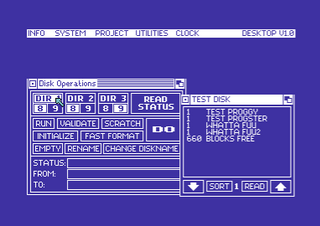
The Final Cartridge III was a popular extension cartridge which was created for the Commodore 64 and Commodore 128, produced by the Dutch company Riska B.V. Home & Personal Computers. It offered a fast loader, increasing the speeds of the disk drive, and a freezer, allowing the program execution to be stopped to be resumed later.
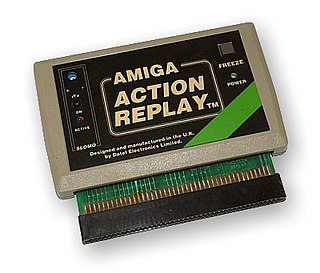
Action Replay is the brand name of a cheating device created by Datel. The Action Replay is available for many gaming systems including the Nintendo DS, Nintendo DSi, Nintendo 3DS, PlayStation Portable, PlayStation 2, GameCube, Game Boy Advance, and the Xbox.
The author of the Expert Cartridge default firmware is John Twiddy who also programmed The Last Ninja for the Commodore 64. He claims that it saved him many months of programming. [1]

In electronic systems and computing, firmware is a specific class of computer software that provides the low-level control for the device's specific hardware. Firmware can either provide a standardized operating environment for the device's more complex software, or, for less complex devices, act as the device's complete operating system, performing all control, monitoring and data manipulation functions. Typical examples of devices containing firmware are embedded systems, consumer appliances, computers, computer peripherals, and others. Almost all electronic devices beyond the simplest contain some firmware.

The Last Ninja is an action-adventure game originally developed and published by System 3 in 1987 for the Commodore 64. Other format conversions were later released for the Apple IIGS, MS-DOS, BBC Micro and Acorn Electron in 1988, the Apple II in 1989, the Amiga and Atari ST in 1990, and the Acorn Archimedes in 1991.


